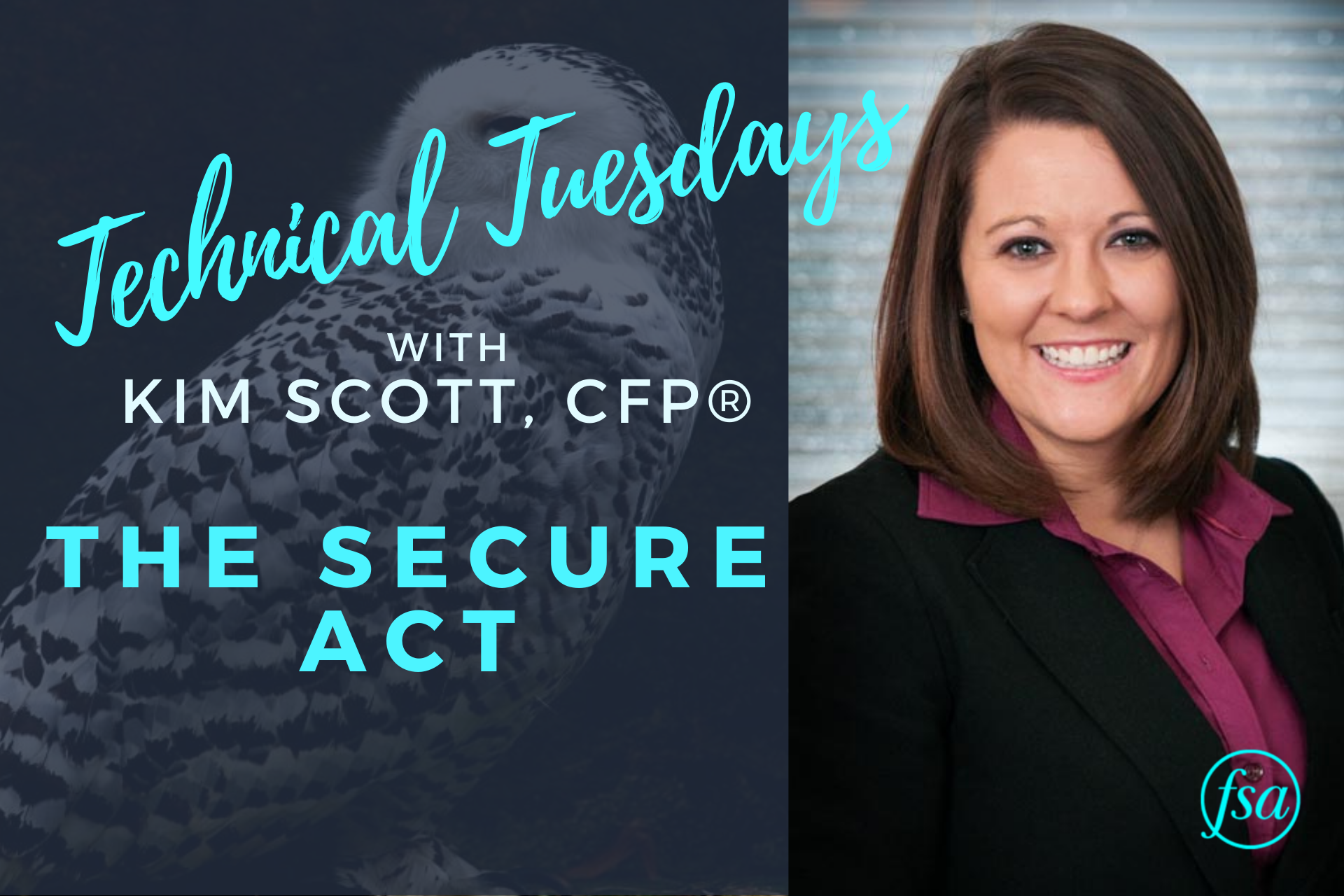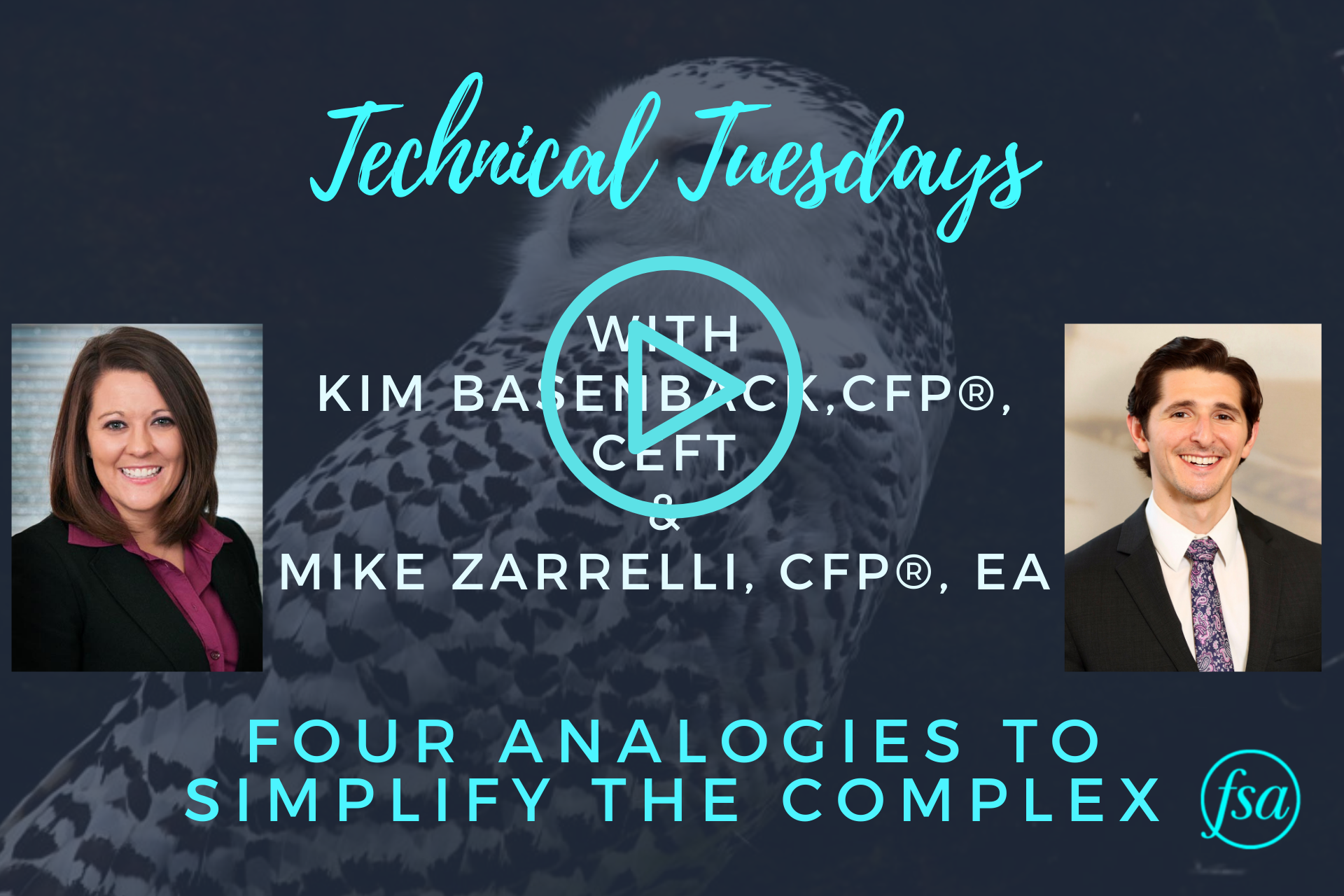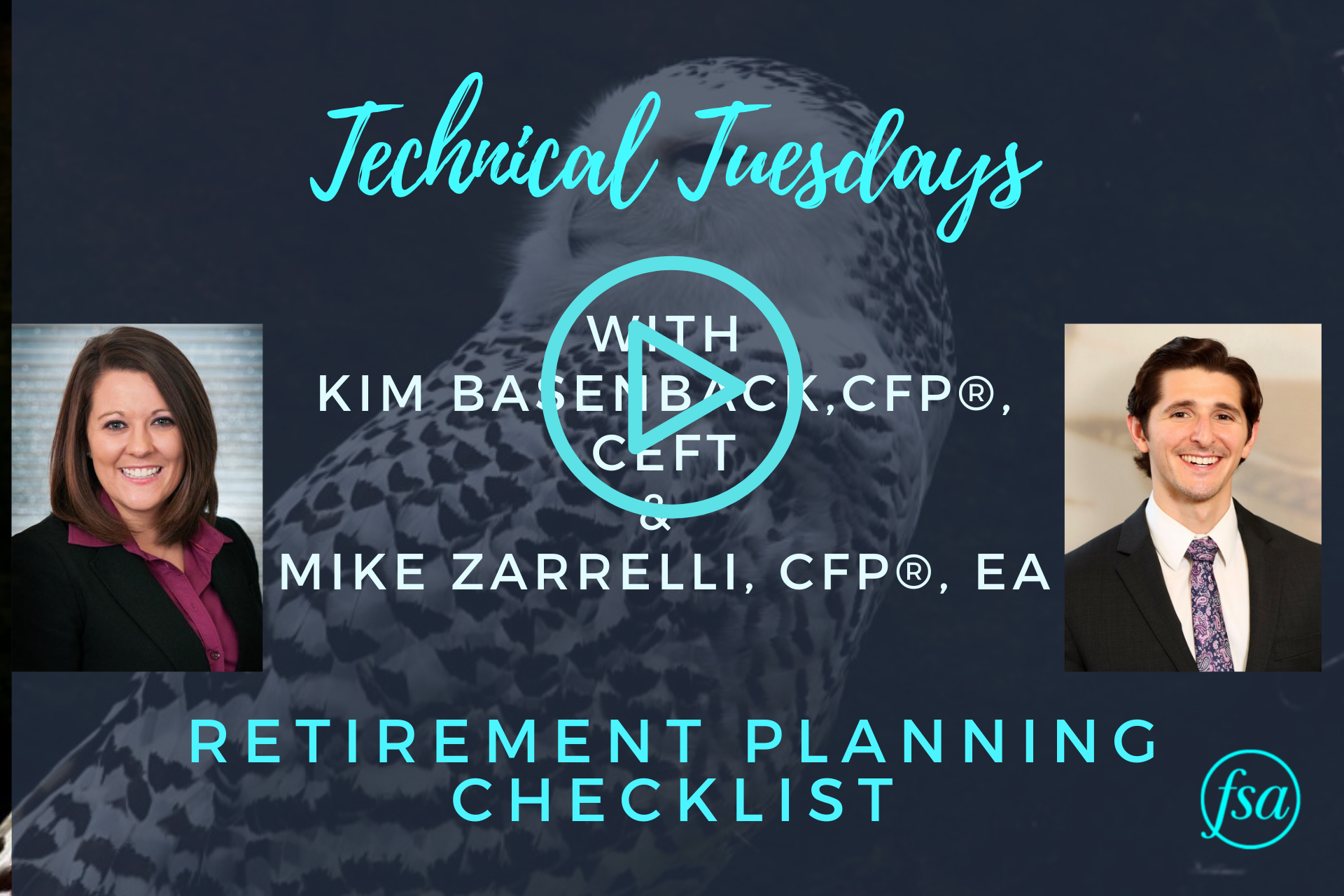In this edition of Technical Tuesdays, Kim Scott, CFP®, Director of Financial Planning, discusses the Secure Act which was passed into law at the end of 2019.
The Secure Act Transcript
Thank you for joining us for Technical Tuesdays. I’m your host Kim Scott, Director of Financial Planning at Financial Services Advisory. Today we want to talk to you about the Secure Act that was passed into law at the end of 2019. The Secure Act stands for “Setting Every Community up for Retirement Enhancement,” and there are several key parts of it that we want to walk through with you today.
The first one we want to talk to you about is the fact that they have shifted the age at which you’re required to start pulling from your retirement accounts. That used to be 70.5; now it’s officially age 72, so you’ll now be required to start pulling from those accounts once you reach the age of 72 or the year in which you reach the age 72. One thing to note is that if you were 70.5 before January 1, 2020, you still have to keep pulling even though you may be 70.5, 71, you have to continue pulling as you, since you had already started pulling.
The second piece is they have now lifted the age from which you are no longer able to contribute to IRAs. It used to be once you reached that 70.5 number you could no longer contribute; you had to instead pull from your IRAs. Well, now you can contribute at any age to an IRA. One key factor, though, is that you have to have earned income, so you can contribute up to the limit as long as you at least have that much in earned income.
The third piece is a little bit more complicated. This one they’ve been calling the death of the stretch IRA, but essentially, it significantly impacts people inheriting IRA accounts. So it used to be, if someone were to inherit an IRA, they could take a little bit out, their required amount every single year and kind of take it out over their lifetime and keep that IRA in place and just out take whatever they were required to. That’s no longer the case. Now beneficiaries are required to take the entire amount out over ten years. So there is no longer a required distribution in any of the years. They can take whatever they want year one, two, three, four, and so forth as long as a hundred percent of the account is distributed by year ten. Now there are several exemptions to this ten-year rule, the first being if you’re the spouse of the person that passed away, so you’re still able to roll that into your own IRA and stretch that distribution over your lifetime. Another is if the beneficiary is not more than ten years younger than the person that passed away, they have an exemption, as well as for those that are ill or disabled. And then lastly, if you’re the minor child of the person that passed away, they are exempt until they reach 18, and then they are required to take it out over ten years beyond that.
One thing we really want to highlight with this shift is if you have a trust listed as a beneficiary of your IRA, it’s really important for you to reexamine that and go back to the attorney and make sure that your verbiage is correct. We’re finding that there are some cases where it was meant for the trust to only distribute out the required minimum distribution to the beneficiary, but now if that is in there, now there’s no required minimum distribution until year 10 and it’s 100 percent of the account. So you could be stuck in a situation where your beneficiary is required to pay a hundred percent of the taxes on the entire account balance in one year, so it’s important to revisit that, and if you have any questions, please reach out to us. We’re happy to help you walk through that and make sure that things are in the right place.
Another key element we want to highlight is another exemption added to the ten percent withdrawal penalty for those withdrawing from an IRA before you reach age 59.5. There are a handful of exemptions that remove that ten percent penalty. A new one was added, and that’s if you were to pay for expenses for childbirth, as well as adoption, so you can now withdraw up to $5,000 without that penalty – now you still have to pay taxes – but you don’t have that ten percent penalty for childbirth, as well as adoption. Now the last change we want to highlight for you is an additional qualified education expense for 529 plans. So as you know, the 529 plan is designed to pay for education expenses, and there’s a number of qualified expenses. So now you can actually pull up to $10,000 per beneficiary to pay for student loans, in addition to expenses incurred while they’re in school.
Now how the Secure Act impacts you could be very different, so if you want to talk through your specific situation, please give us a call or email us. For now I’m Kim Scott. and this has been Technical Tuesdays.
FSA’s current written Disclosure Brochure and Privacy Notice discussing our current advisory services and fees is available at www.FSAinvest.com/disclosures or by calling 301-949-7300.




